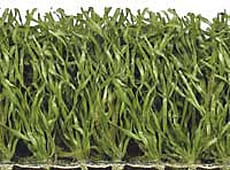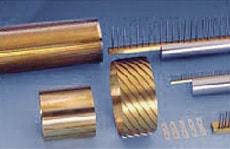Players increasingly prefer artificial turf due to the soft yarns. The preferred one is linear low density polyethylene (LLDPE) because it is easy to achieve the desired softness. The FIFA Quality Concept for football turf outlined the performance requirements for choosing the LLDPE material. Many aspects of the game played on artificial turf have improved significantly over the years.
Latest generation artificial turf constructions with very reproducible playing conditions have by now made significant inroads into American Football, Soccer, Rugby and other major sports, long played on natural turf. In addition, benefits of artificial turf systems include reduced maintenance and water (fertilizer) requirements, higher utilization (more playing hours), rendering the transition to artificial turf economically interesting.

The most important performance requirements for fibrillated tape are:
The fibrillated artificial turf yarn is produced:

We tested different types of materials in order to maintain a key mechanical property of fibrillated yarns: the tear resistance in machine direction, influencing the fibrillation process and the ultimate yarn splitting and resulting wear in the field.
Over the years, we developed Machines for Artificial Turf Components keeping all the high quality standards.